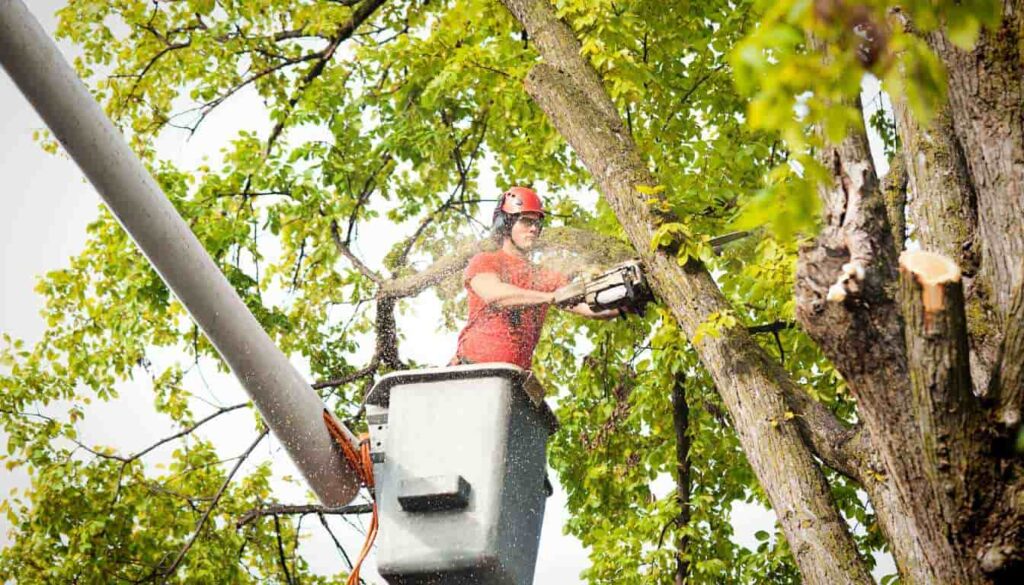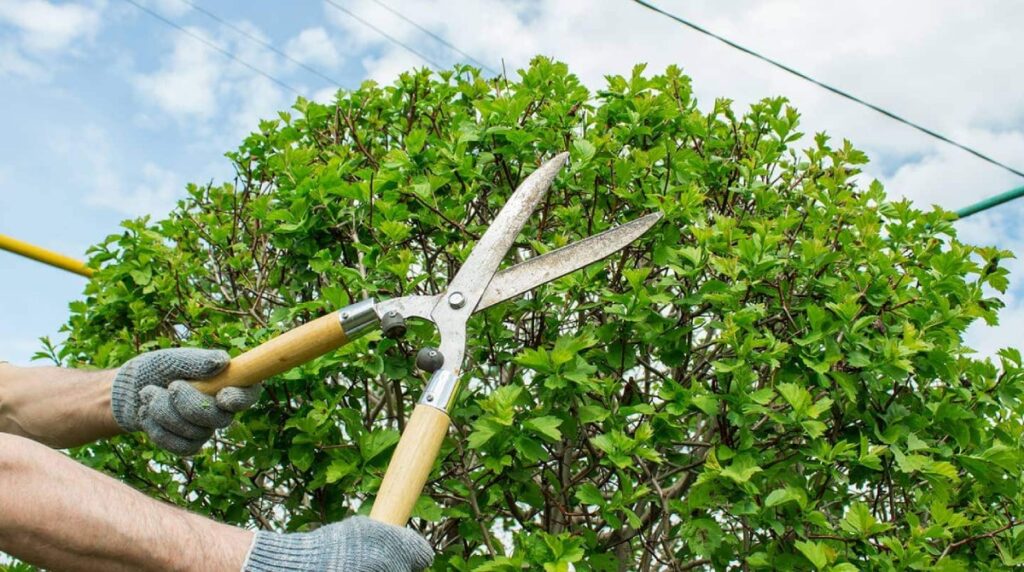Maintaining healthy trees is an essential part of responsible tree ownership. Proper tree pruning plays a crucial role in promoting the growth and well-being of trees. Understanding the importance of tree pruning is the first step towards ensuring healthier and more beautiful trees in your surroundings.
Understanding the Importance of Tree Pruning
Tree pruning is the process of selectively removing specific branches or limbs from a tree. It is performed for various reasons, including improving tree structure, promoting growth, and preventing potential hazards.
When it comes to tree pruning near me, it’s essential to consider the timing and techniques used. Different tree species may require specific pruning methods, and understanding the unique characteristics of each tree is crucial for successful pruning outcomes.
The Science Behind Tree Pruning
Tree pruning is based on the biological concepts of how trees grow. By removing dead, damaged, or diseased branches, the tree can allocate its resources more efficiently to promote healthy growth in other areas.
Furthermore, tree pruning stimulates the tree’s natural defense mechanisms, encouraging the development of strong, resilient branches that can better withstand environmental stressors such as strong winds or heavy snow loads. Visit https://sustainable-gardening-tips.com/enhancing-your-garden-expert-tree-pruning-services-in-sydney for expert tree pruning services in Sydney.
Benefits of Regular Tree Pruning
Regular tree pruning offers numerous benefits. It improves the tree’s overall health by enhancing air circulation, allowing more sunlight to reach the inner branches, and reducing the risk of diseases. Pruning also enhances the tree’s aesthetic appearance, making it more visually appealing.
In addition to these benefits, proper tree pruning can also increase fruit production in fruit-bearing trees. By strategically pruning branches, fruit trees can redirect their energy towards fruit development, resulting in higher yields of better quality fruits.
Identifying When Your Trees Need Pruning
Knowing when to prune your trees is crucial. It is essential to recognize the signs that indicate a tree needs pruning to maintain its health and prevent potential problems.
Regular tree pruning not only enhances the aesthetic appeal of your landscape but also promotes the overall well-being of your trees. Proper pruning techniques can help improve tree structure, stimulate growth, and reduce the risk of falling branches during storms or strong winds.
Seasonal Indicators for Tree Pruning
Each season presents specific opportunities for tree pruning. In winter, when trees are dormant, it is an ideal time to prune because there are no leaves to obstruct visibility, and the tree’s energy is focused on root and branch development.
Pruning in spring allows for the removal of winter damage, encourages new growth, and helps shape the tree. Summer pruning is suitable for removing excessive growth, improving air circulation, and reducing the risk of storm damage. Fall pruning focuses on eliminating deadwood and preparing the tree for winter.
It’s important to note that not all trees require the same pruning schedule. Some species may benefit from more frequent pruning, while others may only need occasional maintenance. Consulting with a certified arborist can help you determine the best pruning regimen for your specific trees.
Signs of Tree Disease and Damage
Visible signs such as discolored or wilting leaves, dead branches, or fungi growth on the trunk may indicate tree disease or damage. Pruning infected branches promptly can prevent the spread of disease to other parts of the tree.
Regularly inspecting your trees for signs of disease, pest infestations, or structural issues can help you address problems early on and preserve the health and longevity of your trees. In addition to visual cues, pay attention to any unusual changes in tree behavior, such as sudden leaf drop or stunted growth, as these could also indicate underlying issues that may require pruning or other interventions.

The Basics of Tree Pruning
Before attempting tree pruning, gather the necessary tools and familiarize yourself with the proper techniques. Understanding the basics will ensure the best results while minimizing the risk of damage to the tree.
Tree pruning is not only essential for the tree’s health but also for safety reasons. By removing dead or weak branches, you can prevent potential hazards such as falling limbs during storms or strong winds. Additionally, proper pruning can improve air circulation within the tree canopy, reducing the risk of disease and promoting overall tree vigor.
Tools Needed for Tree Pruning
Essential tools for tree pruning include a pair of pruning shears, loppers, a pruning saw, and a pole pruner for hard-to-reach branches. Keeping these tools clean and sharpened will ensure efficient and effective pruning.
In addition to the basic tools, having a pruning sealant on hand can be beneficial, especially when dealing with larger branches. Applying a sealant to pruning wounds can help prevent disease and decay, promoting faster healing and reducing the risk of infection.
Pruning Techniques for Healthy Trees
When pruning, always start by removing dead, damaged, or diseased branches. Make clean cuts just above the branch collar, avoiding leaving stubs or cutting too close to the trunk. Proper cuts promote healing and prevent the tree from becoming vulnerable to diseases.
For shaping, prune branches that are crossing or rubbing against each other. Maintain a balanced canopy by removing excessive growth. Remember to step back frequently to assess your progress and ensure a visually pleasing result.
It’s important to note that timing is crucial when pruning trees. Most deciduous trees are best pruned during late winter or early spring when they are dormant. On the other hand, spring-flowering trees should be pruned right after they bloom to avoid cutting off next season’s flower buds. Understanding the specific needs of each tree species will help you determine the best time for pruning to promote optimal growth and flowering.
Safety Measures for Tree Pruning
While tree pruning can be a fulfilling and beneficial task for maintaining the health and aesthetics of your trees, it is essential to prioritize safety above all else. By following proper safety measures, you can ensure a more enjoyable and risk-free pruning experience while safeguarding yourself from potential accidents and injuries.
Before embarking on any tree pruning activity, it is crucial to familiarize yourself with the necessary safety precautions and equipment to protect yourself and others in the vicinity. In addition to enhancing safety, these measures can also contribute to the overall success and efficiency of your pruning efforts.

Personal Protective Equipment for Pruning
One of the fundamental safety practices when engaging in tree pruning is wearing appropriate personal protective equipment (PPE). Safety goggles or glasses are essential to shield your eyes from flying debris, while gloves provide protection for your hands against cuts and scratches. Furthermore, a sturdy helmet can offer crucial head protection in case of falling branches, and wearing shoes with excellent traction can prevent slips and falls.
It is also advisable to wear clothing that covers your arms and legs to minimize exposure to scratches and cuts from branches. By investing in quality PPE and ensuring its proper use, you can significantly reduce the risk of injuries and create a safer working environment for yourself.
Safe Pruning Practices
Prior to commencing any pruning activities, conduct a thorough assessment of the tree and its surroundings to identify potential hazards. Look out for overhead power lines, weak or dead branches, and any obstacles that may pose a risk during the pruning process. Planning your pruning strategy in advance and being aware of your surroundings can help prevent accidents and ensure a smoother pruning operation.
When pruning, avoid overreaching or using unstable ladders that can lead to falls and injuries. If you encounter a situation that seems too risky or beyond your expertise, do not hesitate to seek professional assistance. Remember, your safety should always be the top priority when engaging in tree pruning activities.
Hiring Professionals for Tree Pruning
Complex pruning tasks or trees located near power lines often require the expertise of professional arborists. Knowing when to call a professional pruner and selecting the right tree pruning service is essential for the health and safety of your trees.
Tree pruning is not just about aesthetics; it is crucial for the overall health and longevity of your trees. Proper pruning techniques can promote growth, improve tree structure, and prevent diseases. However, incorrect pruning can lead to irreversible damage and even tree death. This is why entrusting the task to skilled professionals is highly recommended.
When to Call a Professional Pruner
If your tree is large, near power lines, or requires extensive pruning, it is best to hire a professional pruner. They have the necessary equipment, experience, and knowledge to handle complex pruning tasks safely and effectively.
Professional arborists undergo rigorous training to understand tree biology, growth patterns, and proper pruning methods. They can assess the condition of your trees and determine the best course of action to promote their health and structural integrity. Additionally, they are equipped to handle any potential risks associated with pruning near power lines or structures.
Choosing the Right Tree Pruning Service
When selecting a tree pruning service, consider their qualifications, reputation, and insurance coverage. Seek recommendations from friends or neighbors who have had positive experiences with tree care professionals. Don’t hesitate to ask for a quote and compare prices and services before making a decision.
Furthermore, a reputable tree pruning service will provide you with a detailed plan of action, including the specific pruning techniques they will use and the expected outcomes. They will also adhere to industry standards and safety protocols to ensure the well-being of your trees and property during the pruning process.
By understanding the importance of tree pruning, identifying when your trees need pruning, and employing the right techniques and safety measures, you can maintain healthy trees all year round. Whether you choose to do it yourself or hire professionals, regular tree pruning is a vital investment in the long-term beauty and health of your trees.
